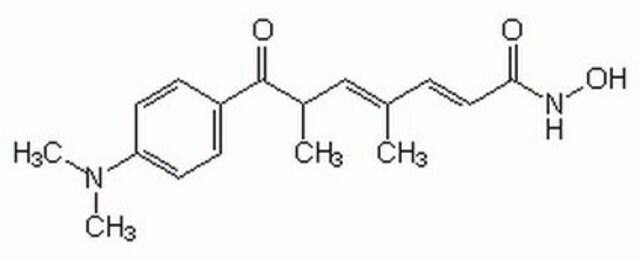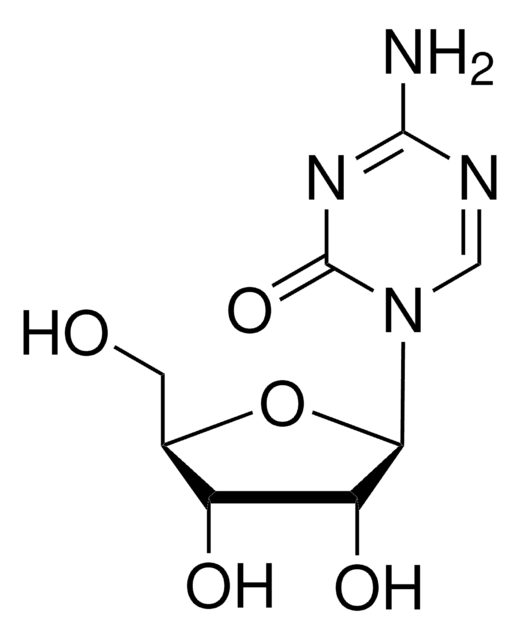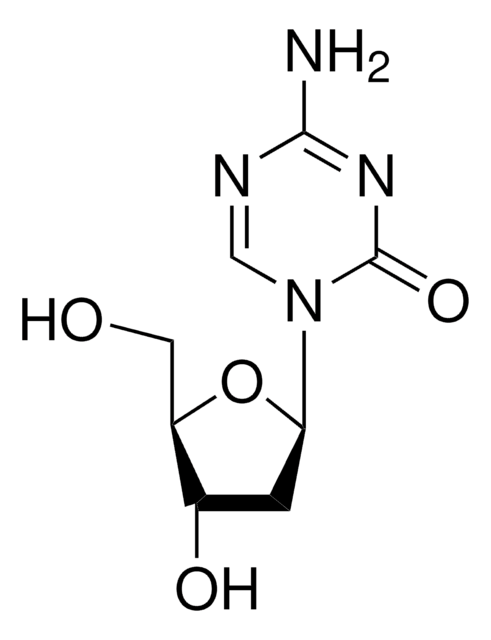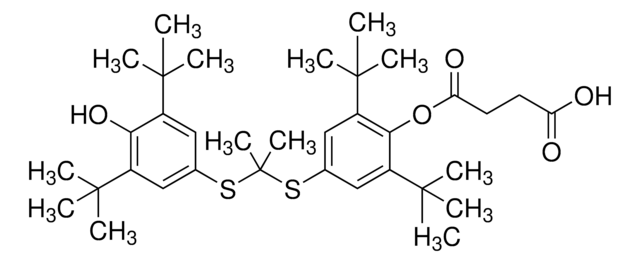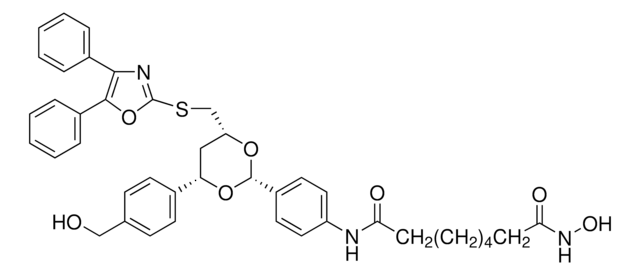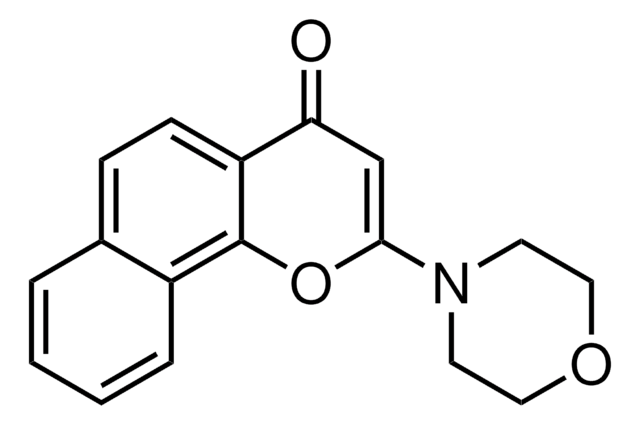T8552
Trichostatin A
≥98% (HPLC), from Streptomyces sp.
Synonym(s):
TSA, [R-(E,E)]-7-[4-(Dimethylamino)phenyl]-N-hydroxy-4,6-dimethyl-7-oxo-2,4-heptadienamide
About This Item
Recommended Products
biological source
Streptomyces sp.
Quality Level
Assay
≥98% (HPLC)
form
powder
solubility
methanol: soluble 1.90-2.10 mg/mL, clear, colorless to faint yellow or tan
DMF: soluble
DMSO: soluble
H2O: insoluble
acetone: slightly soluble
acetonitrile: soluble
benzene: slightly soluble
chloroform: slightly soluble
ethanol: soluble
ethyl acetate: slightly soluble
lower alcohols: soluble
storage temp.
−20°C
SMILES string
C[C@H](\C=C(C)\C=C\C(=O)NO)C(=O)c1ccc(cc1)N(C)C
InChI
1S/C17H22N2O3/c1-12(5-10-16(20)18-22)11-13(2)17(21)14-6-8-15(9-7-14)19(3)4/h5-11,13,22H,1-4H3,(H,18,20)/b10-5+,12-11+/t13-/m1/s1
InChI key
RTKIYFITIVXBLE-QEQCGCAPSA-N
Gene Information
human ... HDAC1(3065) , HDAC4(9759) , HDAC6(10013) , HDAC8(55869)
mouse ... ENSMUSG00000061062(15181)
rat ... Hdac7a(84582)
Looking for similar products? Visit Product Comparison Guide
General description
Application
Biochem/physiol Actions
Features and Benefits
Preparation Note
related product
Storage Class Code
11 - Combustible Solids
WGK
WGK 3
Personal Protective Equipment
Certificates of Analysis (COA)
Search for Certificates of Analysis (COA) by entering the products Lot/Batch Number. Lot and Batch Numbers can be found on a product’s label following the words ‘Lot’ or ‘Batch’.
Already Own This Product?
Find documentation for the products that you have recently purchased in the Document Library.
Customers Also Viewed
Articles
Cancer research has revealed that the classical model of carcinogenesis, a three step process consisting of initiation, promotion, and progression, is not complete.
Epigenetic modifications are thought to occur through two key interconnected processes—DNA methylation and the covalent modification of histones.
Our team of scientists has experience in all areas of research including Life Science, Material Science, Chemical Synthesis, Chromatography, Analytical and many others.
Contact Technical Service